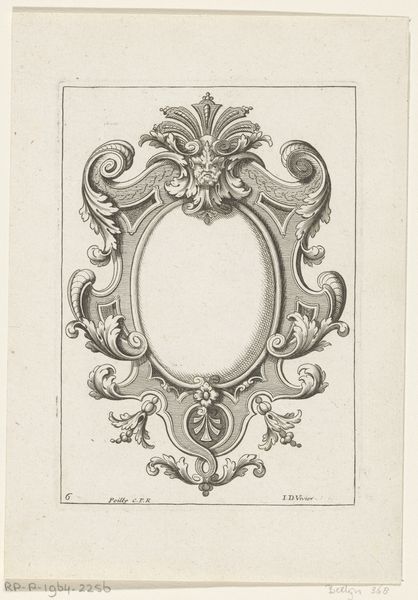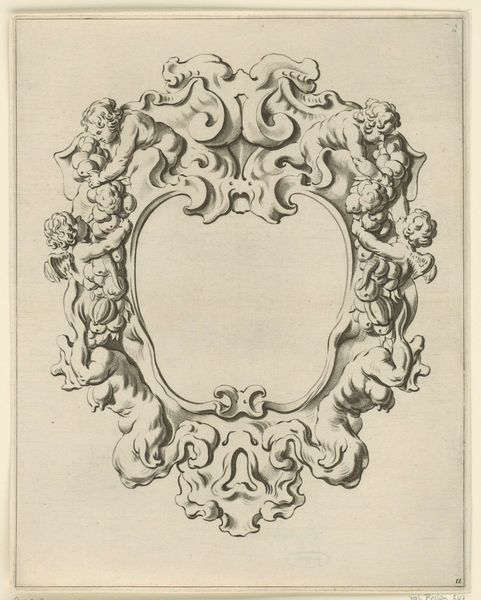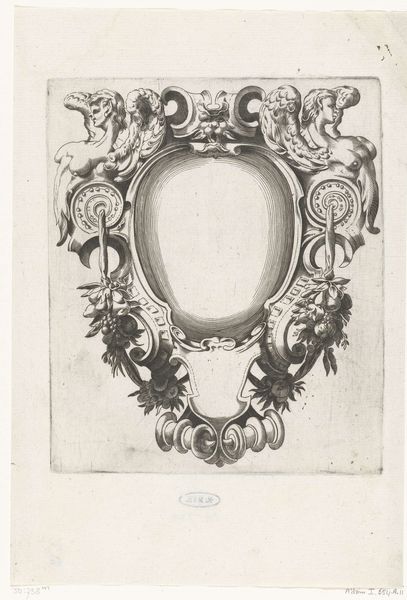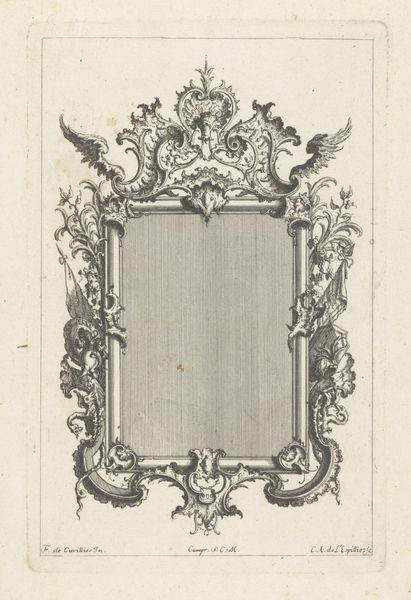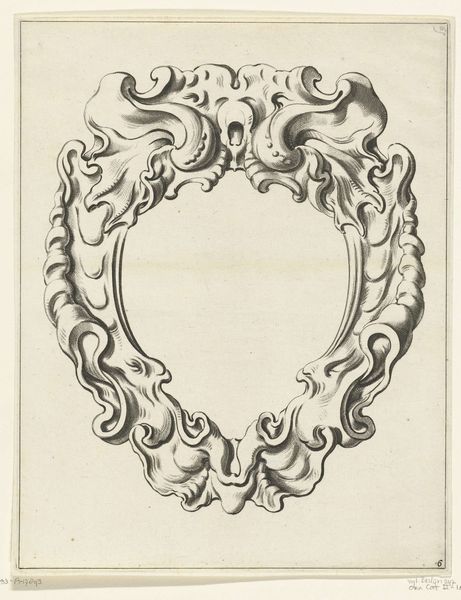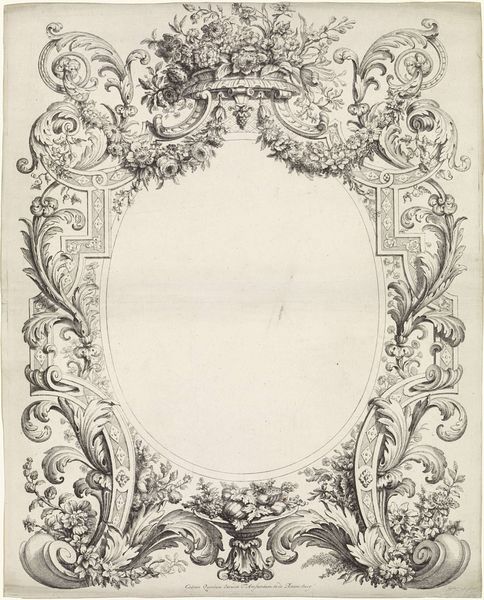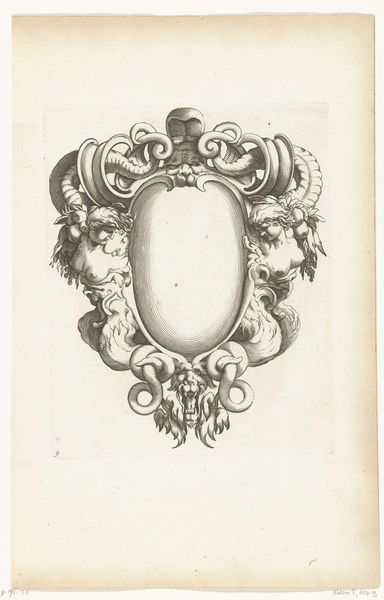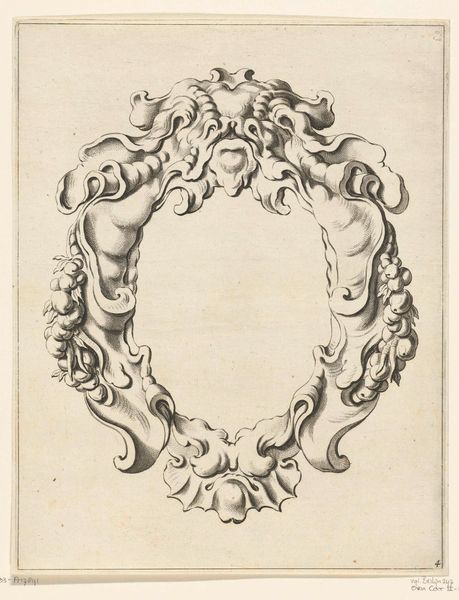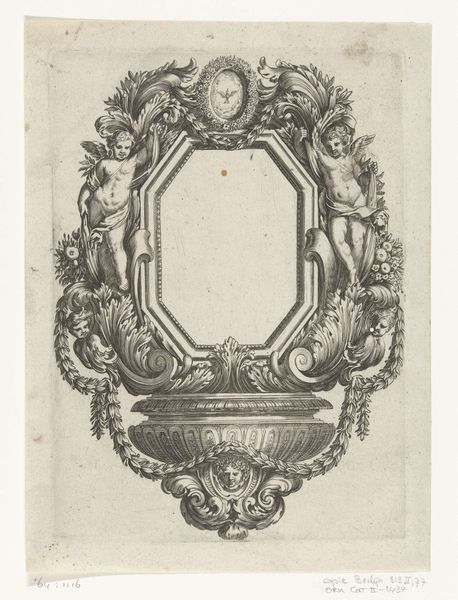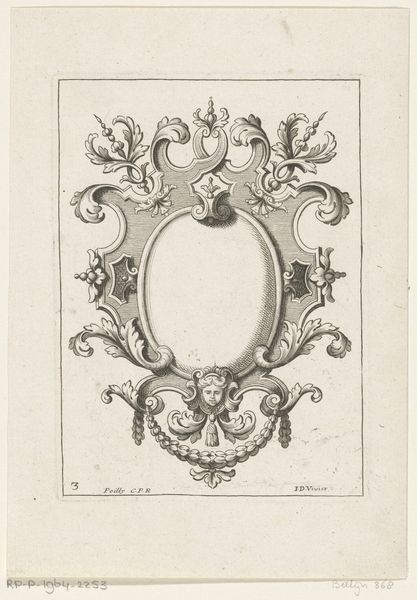
graphic-art, print, engraving
#
graphic-art
#
allegory
#
baroque
# print
#
old engraving style
#
form
#
line
#
engraving
Dimensions: height 172 mm, width 136 mm
Copyright: Rijks Museum: Open Domain
This is an engraving of a cartouche by Petrus Rucholle, made in the Netherlands in the first half of the 17th century. Cartouches like this one were essentially frames, often deployed in prints to surround text or an image, but here the space is empty. What’s also interesting is the way that Rucholle has framed this frame. We see learned allusions in the form of portraits of classical philosophers, as well as symbols of nobility, such as coats of arms, fleur-de-lis, and a hunting falcon. The Dutch Republic was a major centre for the production of prints and engravings, and this example shows how even a humble frame could become a vehicle for displays of learning and status. To understand this image better we might want to research the printmaking industry in the 17th century Netherlands. It’s also worth looking at the function of the frame as a kind of symbolic architecture.
Comments
No comments
Be the first to comment and join the conversation on the ultimate creative platform.



